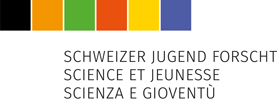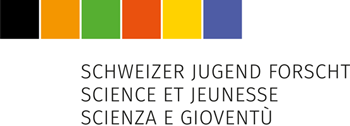Biologia | Ambiente
Gaia Bignasca, 2002 | Roveredo , GR
This study on the Tec Bianch landfill in Lostallo aimed to analyze substances in the groundwater that had not been part of the routine analysis for several years due to their low concentration during the beginning of monitoring and to assess the correctness of the air analysis based on: the quantity of substances analyzed, the functionality of the sampling site locations and the availability of the analysis results to the public.
Introduction
The Tec Bianch landfill in Lostallo has been in operation for more than 40 years and, like any other polluted site, represents a risk to human health in case of contamination of the surrounding environment. It is therefore in the interest of human health that the site’s environmental impact is constantly monitored. The objective of this work is to evaluate the conformity of the routine analyses that determine the environmental impact.
Methods
The environmental impact of reactor landfills such as the one discussed here is generally calculated by analyzing two factors: groundwater and relapsing dust. The groundwater was sampled and then analyzed in the cantonal laboratory in Chur. For this study, three substances (copper (Cu), chrome (Cr), nickel (Ni)) were reanalyzed, which are generally omitted from routine analyses because they showed very low concentrations during the beginning of the landfill’s monitoring. Subsequently, the conformity of relapsing dust analyses was determined by research based on scientific studies.
Results
The results showed that there were no values that exceeded the concentration limit of the substances (based on the federal law for groundwater and air pollution). The water sampling sites were positioned on the basis of a groundwater map of the whole valley. It would be necessary to invest in an exact mapping of the groundwater of the landfill in order to achieve maximum efficiency in the positioning. Following a piezometer shift, comparisons between analyses were performed, and the results showed that there were no significant differences in concentrations, so their position seems to be accurate. Based on the analysis carried out so far, there are no concentrations that exceed the limit. In terms of air analysis, after 2015, two sampling sites that had shown high concentrations often above the limit were removed. Since then, we have been limited to sampling fallout dust only in populated areas, and the limit appears to be met. Other harmful substances, as for example cadmium (Cd), zinc (Zn) and thallium (TI), are analyzed less frequently for economic reasons, as they have never exceeded the concentration limits.
Discussion
The values of chromium, cadmium and nickel were still relevant, even if they did not exceed the limit imposed by federal law. These analyses show that their presence is relevant and their value is not low enough to omit them completely from the analysis for the monitoring of the landfill. The only issue that remains open for the water analysis is the accuracy of the underground mapping and consequently of the piezometer placement. A more detailed mapping of the polluted site may be required. Finally, with regard to the analysis of fallout dust, it would be necessary to increase the number of sampling sites despite the economic limitations. It would not be sufficient to limit the sampling only to the residential area, as there are people working inside the landfill and others working in the surrounding fields, as well as animals grazing there.
Conclusions
In conclusion, the analyses determining the environmental impact show clearly that there is no environmental threat emanating from the landfill of Tec Bianch. However, to literally interpret the federal law, the sampling sites and the analyzed parameters could be extended and the sampling rate could be increased.
Valutazione del lavoro espressa dall’esperto
Dr. Rolf Sidler
Die vorliegende Arbeit zeugt von grossem Einsatz und viel Begeisterung für den Schutz der Umwelt und die nachhaltige Nutzung von natürlichen Ressourcen. Gaia Bignasca hat eine relevante Fragestellung im Bereich der Überwachung von Deponien bearbeitet und es ist ihr gelungen, konkrete Unstimmigkeiten im Zielkonflikt zwischen umfassender Überwachung und ökonomischen Interessen aufzuzeigen. Mit viel Ausdauer hat Gaia Bignasca eine ausführliche Literaturstudie durchgeführt, die aktuell durchgeführten Messungen evaluiert und auf überfällige Untersuchungen und Berichte hingewiesen.
Menzione:
molto buono
Sonderpreis Aqua Viva
Bündner Kantonsschule, Chur
Docente: MSc Stefano Peduzzi



